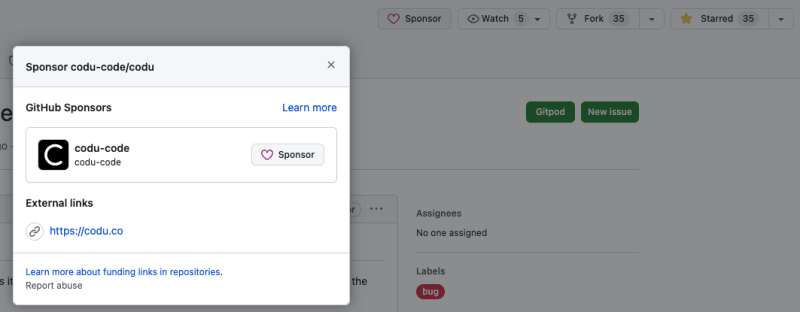You may have noticed at the top of repos there are some little buttons - Sponsor, Watch, Fork and Star - but do you know what they are and how you should use them? Well wonder no more!
Sponsor
Sponsor is a special button that you'll only find on some repos and developers profiles.
It allows the developer community to financially support people or organisations who design, build and maintain the open source projects that you love and depend on, directly from within GitHub.
"Open source is the heart of GitHub, so it was a no-brainer for us to build tools for developers and communities that make the community even stronger... As the place where so much software development happens and one that is so indebted to open source, GitHub Sponsors is a first step to building those tools."
GitHub Sponsor is available in 68 regions, and a good starting place for finding open source contributors to sponsor is the GitHub Sponsors Community, which will display a list of developers and projects that your projects depend on.
Watch
Hitting the watch button on a repository allows you to receive notifications for activity within that repository to keep up to date with events.
There are a few different options for notifications - such as receiving notifications only when you participate with, or are mentioned, receiving notifications of all activity, never being notified, or even custom notifications that you can set up to your own parameters.
Fork
The fork button allows you to create a new repository that shares the code and visibility settings from the original repository (the "upstream" repository).
Forking is a very useful tool when working with open source projects, as it allows you to work on your own repository of the code without affecting the original project. Then, when you are ready to send your changes to the original repository, you can push them back to the upstream repository and create a pull request which details what you have changed. These changes will then be reviewed by a maintainer of the upstream repository and either accepted, request amendments or denied.
This topic is obviously much broader than I have explain briefly here, but you can find some more information about forking on GitHub, take a look in the further reading section below.
It's worth noting that creating a fork of a repository will require you to keep your fork up to date, this means will need to regularly pull in changes made to the upstream to ensure that your fork is up to date - so if you aren't planning to work on the code, but want to be able to reference the code in the future, watching and starring may be better for you.
Star
The star button allows you to keep track of topics and repositories that you are interested in, and these stars also allow GitHub to recommend related content you may enjoy in your news feed.
You can also keep your stars organised by utilising the lists feature. I love using this feature to allow me to break down the repositories I star into their relevant languages, technologies or topics.
It is generally considered good etiquette within the developer community to give a repository that you fork or watch a star - its not compulsory, but I'm sure if you do you would make the repository owners day 😊























